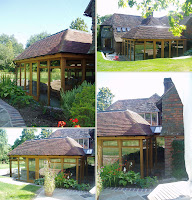Online- websites, blogger, social networks, and e-books.
Digital- CD/DVD
Traditional- A3/A1 traditional portfolio, photo book.
The advantages of an online portfolio is that it is easier to show when the viewer is far away and you can't get to them easily. The disadvantages is that if they may not have access a computer or to the internet.
The advantages of a CD/DVD portfolio is that it is easier to carry around and is more reliable than the internet to show the work that has been created. The disadvantages of this is might be that if the dice does not work or get scratched or broken.
The advantages of a A3/A1 portfolio is that some people like to see the real piece of work that has been made not just a copy or a photograph of it. The disadvantages of this is that it can be heavy and big, and most people don't have space to store them.
1.Why do you have to select work for a portfolio?
There may have been too much work to include them all- you cannot include all the work you have done over the year as it would be too heavy and big. It will take too long in an interview to see it all, and you will need to have the best bits.
2. Should you include finished work only?
No, you don't need to only put finished work into the portfolio, you can include parts that you are working on if they relate to the final piece and outline what materials and processes you used to get there.
3. What can portfolios be used for?
They can be used for job interviews, another college course or university, or because you have art as a hobby!
4. Do you need to include any written information?
Yes, to explain something more about your piece and how it went, and to show how well you can write!
5. How can you tell what is your strongest work?
You would be able to talk a lot about it because you're passionate about it, and what you feel in your heart is best!
Examples of portfolios:
fine art:
illustration:
Graphic Designer:
Photographers:
Architects:

Interior Designers:

Fashion Designers:





























